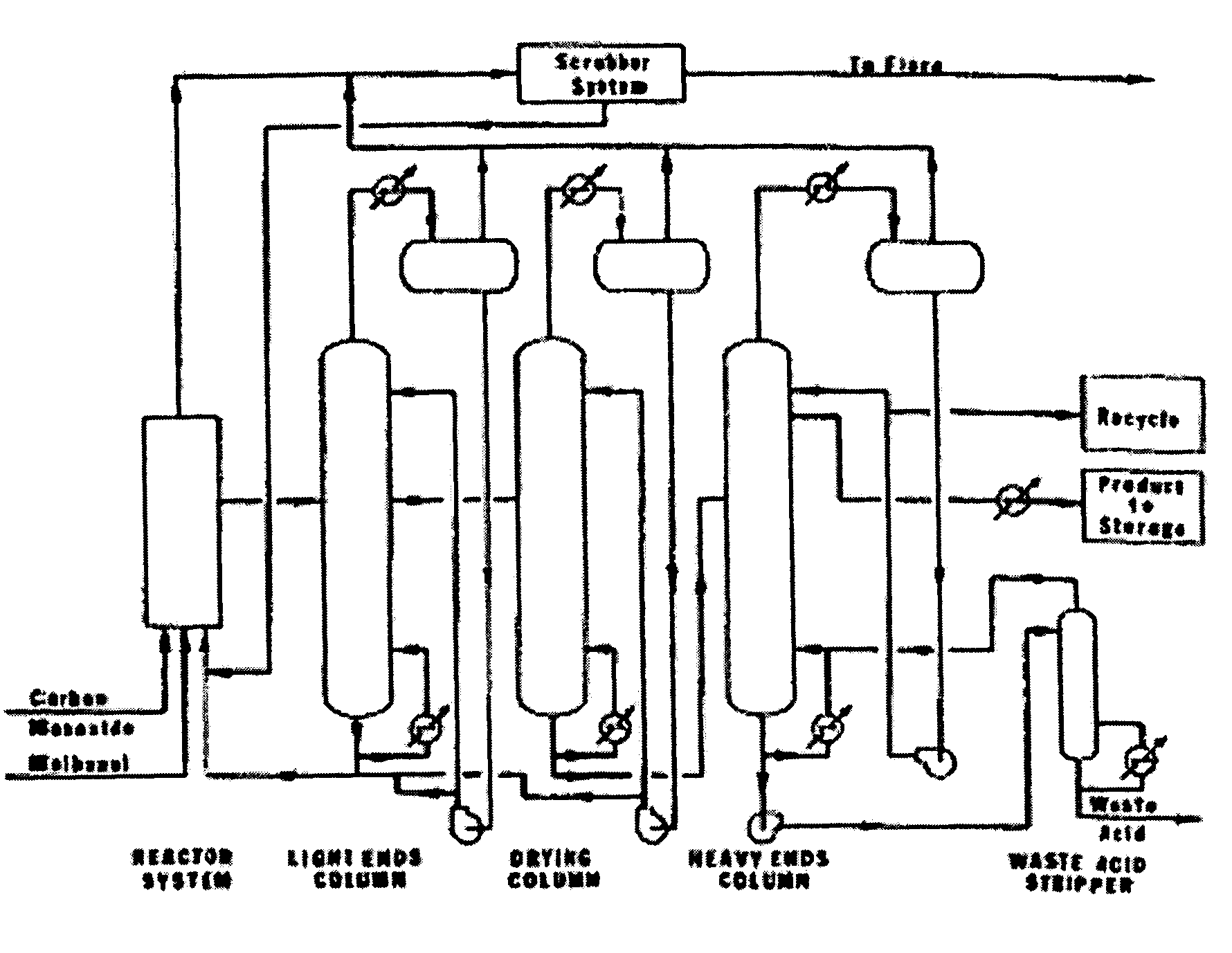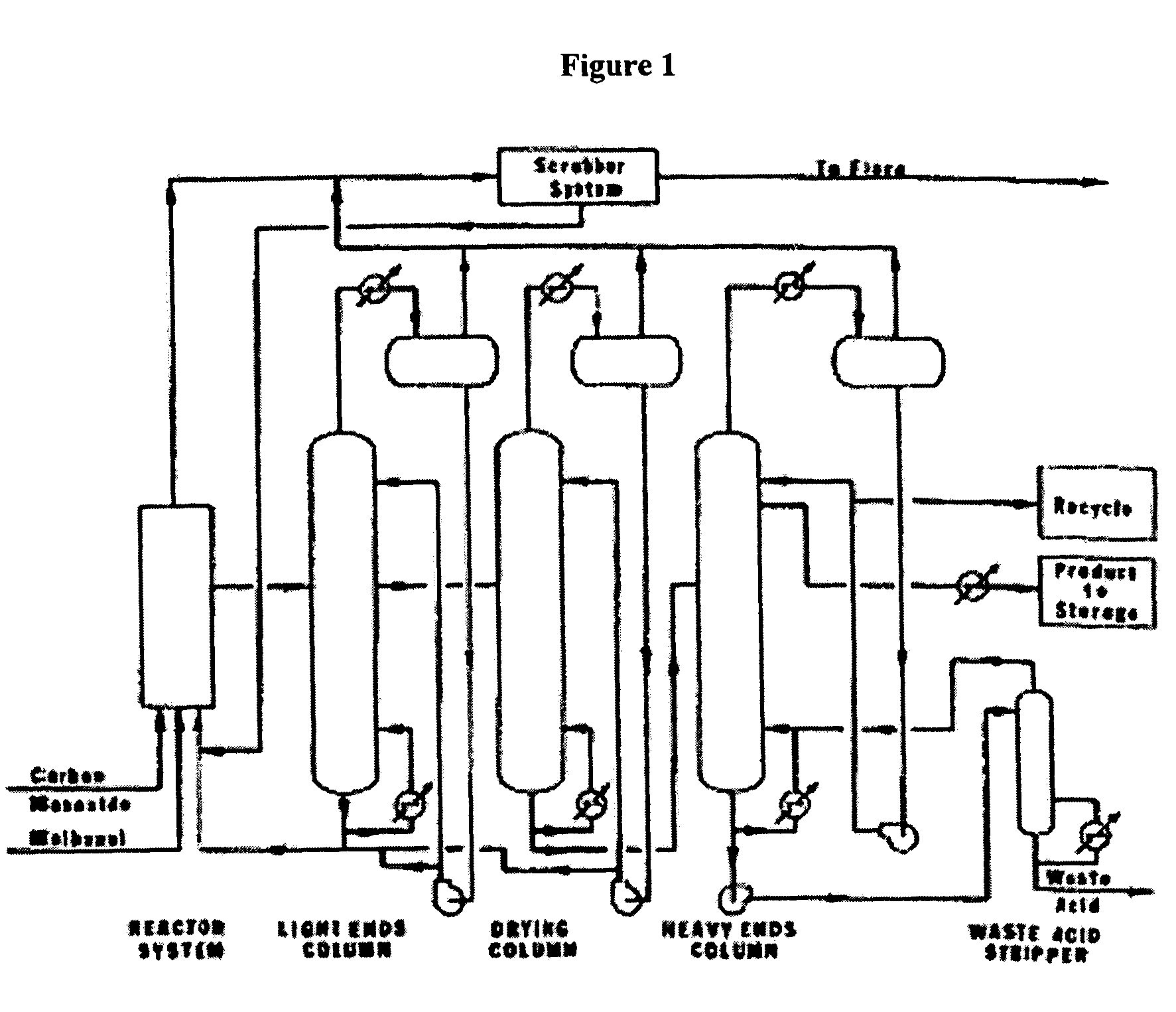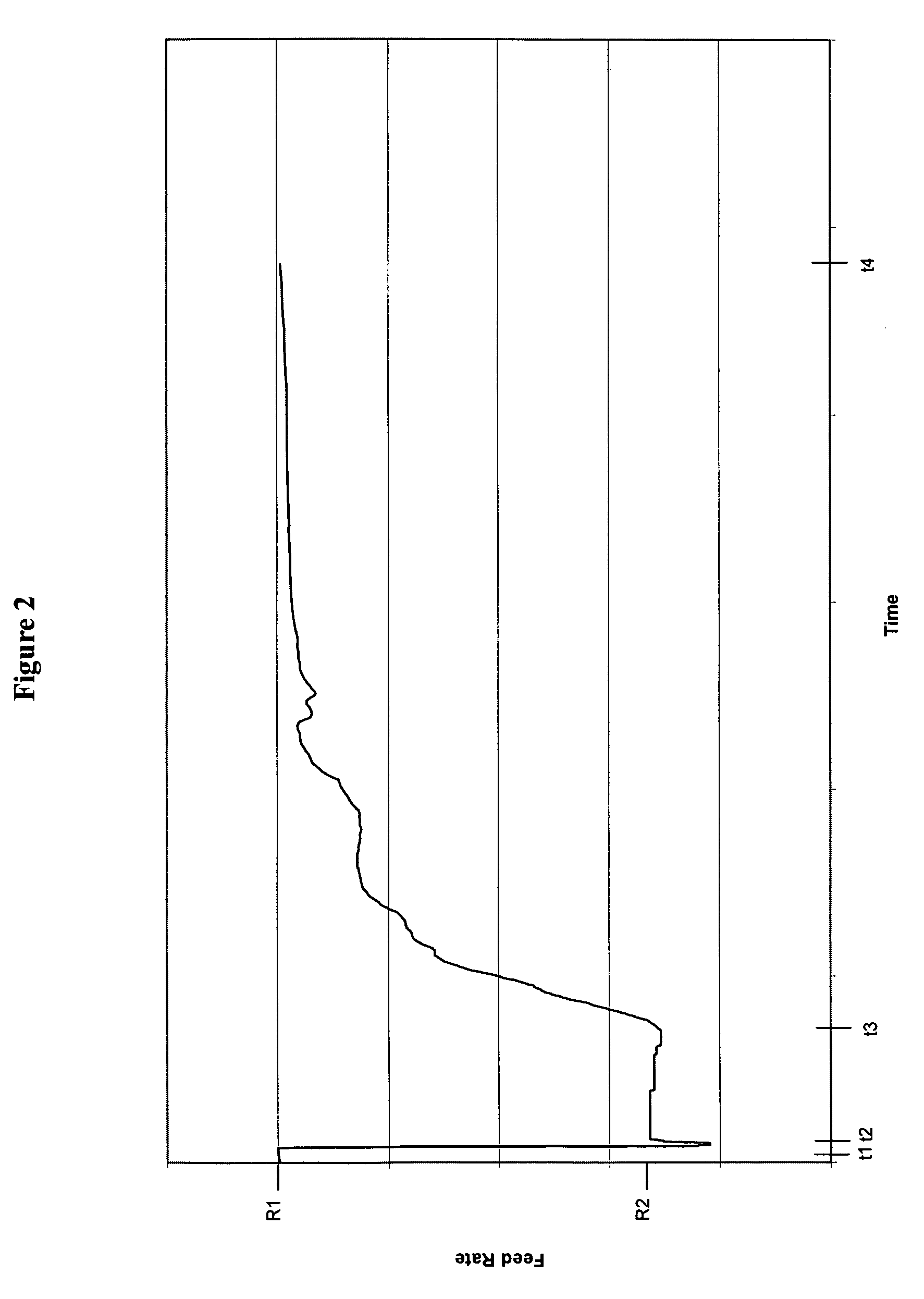Method of controlling acetic acid process
a technology of acetic acid and process, applied in adaptive control, process and machine control, instruments, etc., can solve the problems of loss of phase separation, shortage of storage capacity of acetic acid product, etc., and achieve the effect of reducing production rate, reducing production rate, and reducing production ra
- Summary
- Abstract
- Description
- Claims
- Application Information
AI Technical Summary
Problems solved by technology
Method used
Image
Examples
example 1
[0033]A methanol carbonylation process, such as generally depicted in FIG. 1, was operated is in low-water mode under steady state conditions at a target production rate R1, based on methanol flow.
[0034]At time t1, the process was subjected to an upset whereby a reduction of carbon monoxide flow was experienced. At time t2, the process was being operated at a reduced production rate R2, which was 32% of the rate at R1. At that time, the process was put under multivariable nonlinear model-based control, obtained from first-principles modeling. The conditions when the process was operating at time t2, provided as either a difference from the respective conditions prior to the process upset or as a percentage of the respective condition prior to the process upset (100%), were as follows:
[0035]Temperature Difference: −12° C.
[0036]Reactor pressure: 94.6%
[0037]Carbon monoxide flow: 32%
[0038]At time t3, the carbon monoxide flow was restored. At that time, the process was being operated at ...
PUM
| Property | Measurement | Unit |
|---|---|---|
| concentration | aaaaa | aaaaa |
| stability | aaaaa | aaaaa |
| concentrations | aaaaa | aaaaa |
Abstract
Description
Claims
Application Information
 Login to View More
Login to View More - R&D
- Intellectual Property
- Life Sciences
- Materials
- Tech Scout
- Unparalleled Data Quality
- Higher Quality Content
- 60% Fewer Hallucinations
Browse by: Latest US Patents, China's latest patents, Technical Efficacy Thesaurus, Application Domain, Technology Topic, Popular Technical Reports.
© 2025 PatSnap. All rights reserved.Legal|Privacy policy|Modern Slavery Act Transparency Statement|Sitemap|About US| Contact US: help@patsnap.com



